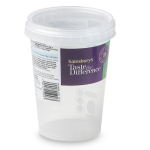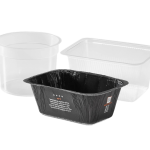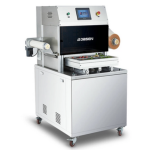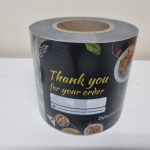If you’re a cat owner who likes to prepare homemade cat food or prefers buying cat food in bulk, freezing can be a great way to ensure its freshness and extend its shelf life. However, choosing the right packaging for freezing cat food is crucial to preserve its quality and prevent freezer burn. In this article, we will explore the best packaging options to freeze cat food effectively.
1. Freezer Bags or Ziplock Bags:
Freezer bags or ziplock bags are popular and convenient choices for freezing cat food. Look for bags specifically designed for freezer storage, as they are made with thicker, more durable plastic. These bags provide an airtight seal, preventing air and moisture from entering and causing freezer burn. Ensure you remove as much air as possible from the bag before sealing to maintain the food’s freshness. Freezer bags are available in various sizes, allowing you to portion out the cat food according to your needs.
2. Vacuum Sealed Bags or Rolls:
Vacuum sealing is an excellent method to maximize the shelf life of cat food in the freezer. Vacuum sealing removes air from the packaging, reducing the risk of freezer burn and maintaining the food’s quality. You can use a vacuum sealer machine to seal the cat food in specially designed vacuum-sealed bags or rolls. This method is particularly beneficial for bulk storage, as it allows you to portion out the cat food and seal it in individual servings. Remember to label each vacuum-sealed bag with the date and contents for easy identification.
3. Sturdy Plastic Containers:
Sturdy plastic containers with airtight lids are another reliable option for freezing cat food. Look for containers made from food-grade plastic that is freezer-safe. These containers are durable and provide an excellent barrier against air and moisture. Choose containers with tight-fitting lids to create a secure seal. Ensure the containers are appropriately sized to accommodate the amount of cat food you want to freeze and leave some headspace to allow for expansion during freezing.
4. Aluminium Foil:
Aluminium foil can be a budget-friendly alternative for freezing cat food. Wrap the cat food tightly in a double layer of heavy-duty aluminium foil to prevent air exposure. Make sure the foil is sealed tightly to maintain the food’s freshness and avoid freezer burn. While aluminium foil is not as airtight as other options, it can still provide adequate protection for short-term storage or if you plan to use the frozen cat food relatively quickly.
5. Silicone Freezer Trays:
Silicone freezer trays are a convenient option for freezing portioned cat food. These trays are usually divided into individual compartments, allowing you to freeze measured servings of cat food. Silicone is flexible and non-stick, making it easy to remove the frozen portions. Once the cat food is frozen, transfer the portions to airtight freezer bags or containers for long-term storage. Silicone freezer trays are reusable, easy to clean, and take up less space in the freezer compared to other packaging options.
Important Tips for Freezing Cat Food:
- Always label the packaging with the date and contents to keep track of freshness.
- Ensure the cat food is cooled to room temperature before freezing to prevent condensation.
- Avoid using packaging materials that are not specifically designed for freezer storage, as they may not provide sufficient protection against freezer burn.
- Place the cat food in the freezer as soon as possible after packaging to maintain its quality.
- Store the frozen cat food in a dedicated freezer section away from strong-smelling foods to prevent cross-contamination of odours.
By selecting the appropriate packaging options mentioned above, you can freeze cat food effectively while preserving its nutritional value and taste. Properly packaged frozen cat food will provide a convenient and nutritious option for your feline companion.





